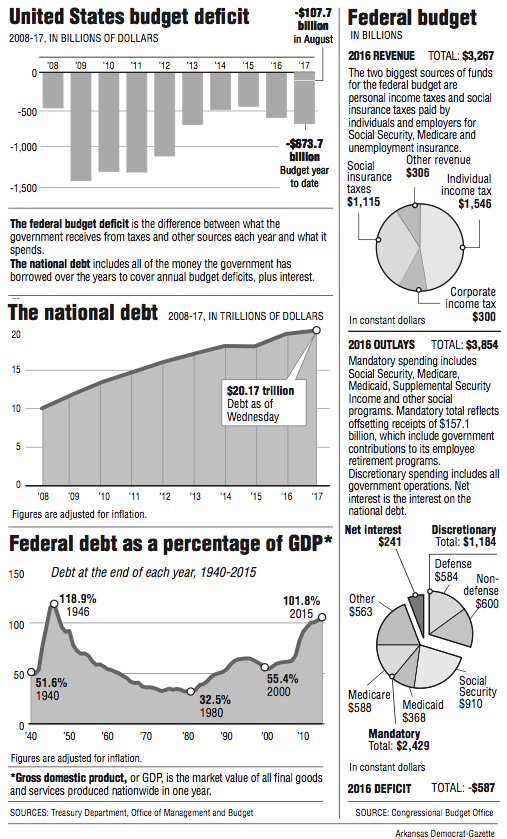WASHINGTON -- The federal government recorded a slightly larger deficit in August than in the same month a year before, while the overall budget deficit through the first 11 months of this fiscal year was well above the same period last year.
The Treasury Department said Wednesday that the August deficit totaled $107.7 billion, up 0.5 percent compared with the deficit of $107.1 billion in August 2016. With a month to go in the 2017 budget year, which ends Sept. 30, the federal budget deficit totaled $673.7 billion, 8.8 percent above the deficit for the same period a year ago.
In July, the Congressional Budget Office raised its forecast for this year's deficit to $693 billion, which would be 18.3 percent higher than the fiscal 2016 deficit of $585.6 billion, in part reflecting smaller-than-expected revenue gains this year.
The budget office's July estimate represented a sharp increase of $134 billion from the agency's January forecast. However, since that time, the budget office has indicated that it might have been too pessimistic in its revised forecast. Some private economists are forecasting a 2017 deficit of around $635 billion. That forecast assumes the government will run a surplus in September, which it has done annually in 53 of the past 62 Septembers.
Through the first 11 months of the budget year, tax revenue totaled $2.97 trillion, up 1.9 percent from the same period a year ago. Government spending totaled $3.64 trillion, or 3.1 percent higher than a year ago.
The government's new budget year begins Oct. 1, and Washington had faced the threat of a government shutdown if Congress had not agreed on a new spending bill by that time. However, President Donald Trump reached an agreement with lawmakers last week for a stopgap funding bill that will finance the government through Dec. 8.
That agreement also suspended the current debt ceiling through Dec. 8, removing the immediate threat of a market-rattling default on the nation's $20 trillion national debt.
When the debt limit goes back into effect on Dec. 9, it will reset at a higher level reflecting the new borrowing. Treasury Secretary Steven Mnuchin can then begin using various bookkeeping maneuvers to buy time until Congress has to address the debt issue again, probably sometime in the spring.
A Section on 09/14/2017
